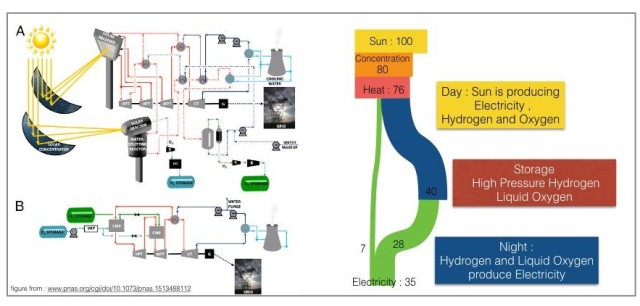Dec 24 2015
Researchers from Purdue and EPFL propose a new concept for round-the-clock power supply and a sustainable economy via synergistic integration of solar thermal power and hydrogen processes.
 © 2015 EPFL
© 2015 EPFL
Researchers from Purdue (Prof R. Agrawal, West Lafayette, ind., USA) and EPFL (Prof Marechal, EPFL Valais-Wallis, Sion, Switzerland) recently published in the Proceedings of National Academy of Science of the United States of America a paper presenting a new concept for converting sun into electricity and hydrogen. They introduce a new concept – hydricity – that involves the coproduction of hydrogen and electricity from solar thermal energy. Storing the electricity in form of hydrogen for a round a clock operation. The proposed integrated process is operated in a standalone solely power production mode, the resulting solar water power (SWP) cycle can generate electricity with unprecedented efficiencies of 40-46 % while in standalone hydrogen mode, pressurized hydrogen and oxygen are produced with an efficiency approaching ~50 %. When sun is not available, hydrogen and oxygen are used used in a turbine-based hydrogen water power (H2WP) cycle with the calculated hydrogen-to-electricity efficiency of 65-70 %. The H2WP cycle utilizes much of the same equipment as the SWP cycle reducing capital outlays. The overall sun-to-electricity efficiency of the hydricity process, averaged over a twenty-four hour cycle, is shown to approach ~35 %, which is nearly as efficient as the best photovoltaic cells along with batteries. In comparison, the proposed process has the following advantages: (a) it stores energy thermo- chemically with a two- to three-fold higher density, (b) coproduced hydrogen has alternate usages in transportation/chemical/petrochemical industries, and (c) unlike batteries, the stored energy does not discharge over time and the storage medium does not degrade with repeated uses.